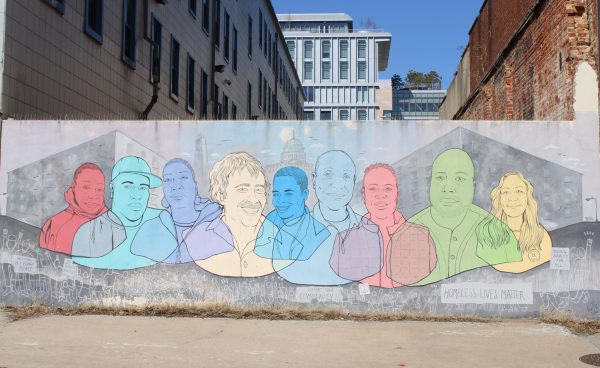How Everyone Tried to ‘Fix’ America’s Education System
“Because I’m awesome. Now let’s focus: what is six times seven?”
“Ummm…what time is it? Is it time to eat yet?”
In DC, 33 percent of poor fourth graders lack basic math skills. This exchange is typical of a day tutoring DCPS fourth graders. Actually, the above was an example of a good day at Garfield Elementary School. With all of the buzz surrounding movies like Waiting for Superman and The Lottery, it’s pretty easy for the general public to demonize teacher’s unions or to glorify charter schools, but it takes more than good cinematography to identify the core problems of America’s failing public schools. Undoubtedly, no single administration or one policy has sent us on this downward spiral.
A year before Reagan became president, Congress passed the Department of Education Organization Act by a narrow margin in both houses. It was established primarily to allocate funding for public education as well as to collect data on US schools in an effort to strengthen enrollment rates of public schools. Why? Beginning in the 1950s, proficiency rates in subjects such as math and science were being compared to China and the Soviet Union. The Space Race of the era had many politicians on high alert to boost overall “achievement”— that is, to boost test scores with which we could compare ourselves to others.
Enter Reagan, who sought (and failed) to dismantle the Department, calling it “President Carter’s bureaucratic boondoggle.” That was, until a report was released called “A Nation at Risk,” detailing the effects of the increasing mediocrity in public education and how it would get worse without federal funding. Following the report, President Reagan did an about-turn. But how did his administration intend to improve the flood of poor results? Testing — lots and lots of standardized testing.
The stress on “achievement” and “accountability” was so high that the Reagan Administration made funding contingent on test scores. And so began the trend of teaching to the test, stifling analytical and critical thinking skills because, in the end, if a school isn’t getting funding due to low test scores, it won’t matter if students learned anything real; what matters is that they perform well on tests.
Fast-forward to 2001, George W. Bush’s Administration and the passage of No Child Left Behind. The sentiment behind the bill was in the right place: raising the standard of education. The bill — totaling over 1,000 pages — detailed a slew of surprisingly progressive and seemingly helpful programs, from School Choice, allowing students to transfer schools if their own doesn’t meet national standards, as well as to receive free tutoring or to attend after-school programs, to Early Reading First, a program that supports the development of early childhood “centers for excellence” that “focus on all areas of development, especially on the early language, cognitive, and pre-reading skills that prepare children for continued school success and that serve primarily children from low-income families.”
What went wrong? There was an obvious lack of resources, especially in areas that needed the most help reaching NCLB’s goals: poor, urban areas. “Because the law’s response if the school fails to make adequate progress is not only to provide additional help for students, but also to impose punitive measures on the school, the incentives are to set expectations lower rather than higher.”
Which brings us to today, to President Obama’s promise to reform the policies of NCLB and his implementation of Race to the Top. This program is meant to set “rigorous standards, attract and keep great teachers, and demonstrate and sustain education reform.” So far, the states which have been awarded funding have, in fact, improved. In North Carolina, a finalist in the Race to the Top competition, the dropout rate was reported to be the lowest ever recorded. The rate of school crime and violence increased, but hey, at least kids are learning, right? It is too soon to know the long-term effects of Race to the Top, but there is already some discrepancy in funding, as well as criticism from both sides of the aisle about the sustainability of the program.
We are left today with a series of broken or failed attempts at “fixing” America’s education system. So what is the future of our education system? Who is the next great reformer? Perhaps Diane Ravitch, author of The Death and Life of the Great American School System, which suggests America should refocus its interests in teacher quality and recruitment. The way to do this, she argues, is not through evaluation of standardized test results which alienate the kind of creative, dynamic people the profession hopes to attract. The only hope for the future of American education is to change society’s perceptions of teaching as a career in an effort to bring about a new generation of thought-provoking and fresh-thinking teachers.
Photo by dcJohn.












